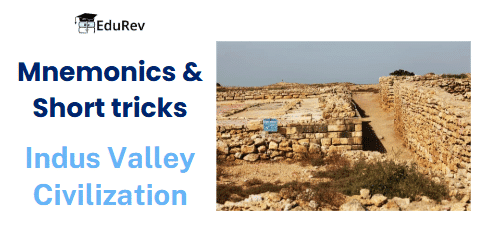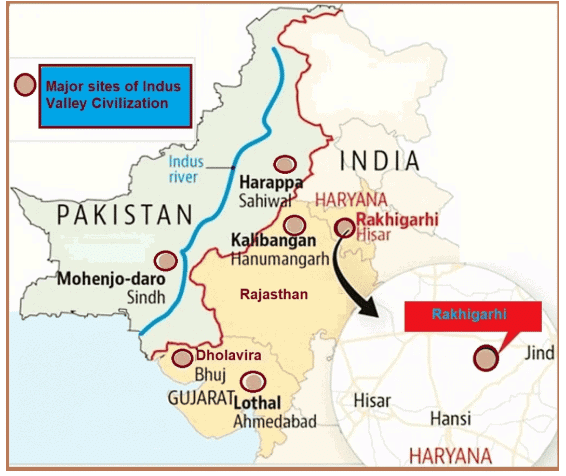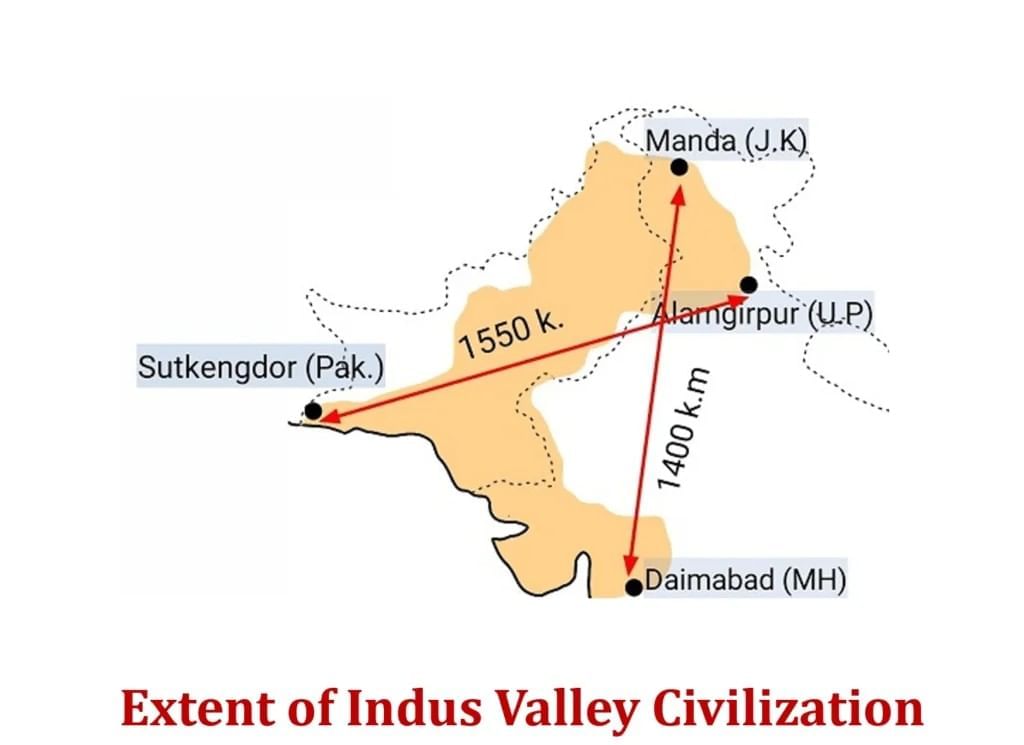UPSC Exam > UPSC Notes > History for UPSC CSE > Mnemonics: Indus Valley Civilization
Mnemonics: Indus Valley Civilization | History for UPSC CSE PDF Download
This document will help you remember important information about the Indus Valley Civilization in a fun and easy way. Inside, you'll find mnemonics—memory tricks—that will make it easier for you to recall key sites, features, and discoveries related to the civilization.
These mnemonics will serve as valuable memory tools. Use them alongside your regular study routine to boost your knowledge and improve your recall.
Important Sites of Indus Valley Civilization

1. Mnemonic: Hot Milk, Dark Chocolate
Mnemonic Explanation:
This mnemonic helps to recall the major sites of the Indus Valley Civilization in order:
- Hot: Harappa (Granaries and bullock carts)
- Milk: Mohenjo-Daro (Great Bath and seals)
- Dark: Dholavira (Water collection system)
- Chocolate: Chanhudaro (Bead-making workshops)
2. Mnemonic: Samosa And Lassi, Bhai!
Mnemonic Explanation:
- Samosa: Sutkagendor (Trading post)
- And: Amri (Evidence of antelope)
- Lassi : Lothal (First artificial port)
- Bhai: Banawali (Beads and barley)
Geographical Extent of Indus Valley Civilization
Mnemonic: DAMS
- D: Daimabad
- A: Alamgirpur
- M: Mandu
- S: Sutkagendor

The document Mnemonics: Indus Valley Civilization | History for UPSC CSE is a part of the UPSC Course History for UPSC CSE.
All you need of UPSC at this link: UPSC
|
210 videos|839 docs|219 tests
|
FAQs on Mnemonics: Indus Valley Civilization - History for UPSC CSE
| 1. What are the major sites of the Indus Valley Civilization? |  |
Ans. The major sites of the Indus Valley Civilization include Harappa, Mohenjo-Daro, Dholavira, Lothal, and Kalibangan. These sites are known for their advanced urban planning, architecture, and drainage systems.
| 2. What is the significance of the Indus Valley Civilization in history? |  |
Ans. The Indus Valley Civilization is significant as one of the world's earliest urban civilizations, which flourished around 2500 BCE. It is noted for its sophisticated city planning, trade networks, and contributions to art and culture, influencing later civilizations in the region.
| 3. What were the key features of the urban planning in the Indus Valley Civilization? |  |
Ans. Key features of urban planning in the Indus Valley Civilization include grid-patterned streets, advanced drainage systems, standardized fired-brick buildings, and large public baths, indicating a high level of organizational skill and civic management.
| 4. What evidence exists regarding the economy of the Indus Valley Civilization? |  |
Ans. Evidence of the economy of the Indus Valley Civilization includes archaeological findings of standardized weights and measures, trade seals, and remnants of agricultural practices. They engaged in trade with neighboring regions and had a well-developed agricultural system.
| 5. How did the Indus Valley Civilization decline? |  |
Ans. The decline of the Indus Valley Civilization is attributed to several factors, including climate change, which led to droughts and reduced agricultural productivity, as well as possible invasions by external groups and internal social unrest, leading to the eventual abandonment of cities.
Related Searches






















